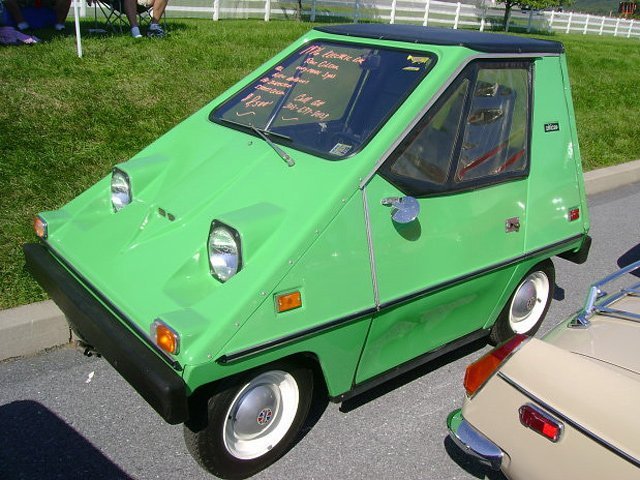Did you know there was an American-made electric car which sold thousands of units some 22 years before GM built the EV-1? The reason you might not is because vehicles which so obviously fail all on their own can't have elaborate conspiracy theories built around them, but the CitiCar really did happen. It was actually a pretty logical response to the energy crisis, but it could only barely be considered a car at all. Electric cars aren't so new as popular opinion might have you believe. In fact, they weren't even new when the CitiCar was built.


A prototype electric car was built as far back as 1828, with the invention of rechargeable batteries in 1856 making the idea much more viable. The first proper four-wheeled electric car was built in 1888 in Germany, and the first four-wheeled vehicle to break the 100 km/h barrier was an electric car in 1899. Interest would continue to pick up, and the first order for commercially-produced electric cars came in 1897, when a whole fleet of electric taxis for New York City were ordered from the Electric Carriage and Wagon Company. Detroit Electric would build electric cars for the general public well into the Thirties. The Hartford Electric Light Company would even come up with a battery swapping system. EV battery swapping has come back, and is currently failing in the form of Better Place, a company which is simply hemorrhaging money. But in those early days, without environmental concerns or fuel shortages to buoy sales, the electric car would lose out to gasoline, disappearing for several decades. The energy crisis in the Seventies would lead some people if maybe there was a better way to get around. So a small company in Sebring, Florida known as Sebring-Vanguard would build a (very) small EV for commuters in 1974.


The car wasn't really meant to replace your regular car, but rather to serve as a commuter vehicle, allowing you to save your regular car, and the fuel in its tank, for more important functions. The wedge-shaped vehicle was rather unapologetically inspired by the golf cart, being little more than an enclosed version of the vehicle. Early models had 6 6v lead-acid batteries connected to a motor which produced 3.5 horsepower. You might think that such a small car would be light enough that the 3.5 horsepower might not be so terrible, but as with an EV, the heavy batteries hindered performance.
The car would end up weighing 1,300lbs, and that mean the 9-horsepower and 1,200lb Citroen 2CV was a veritable drag car by comparison. Top speed in these cars was 25mph, and it is frankly impressive that they sold a single unit. Later models would use eight batteries and bump horsepower up to 6. The top speed was therefore increased to 45mph, which is more or less enough for most in-city non-highway driving. The range was about 40 miles, and the car could be fully charged from a 110v socket in about 8 hours. The CitiCar was built only until 1977, its short life being attributed to the fact that the energy crisis wasn't really so bad as to make people actually want to drive such a thing.


But it would nonetheless be reborn in 1979, when the car's plans were bought by a company called Commuter Vehicles, with the name being changed to the Comuta-Car. This would also be joined by the Comuta-Van, a larger vehicle based on the original, with a bigger van-ish body, more battery power and a 12 horsepower motor. This venture would last only until 1982, but the total sales for Vanguard/Commuter electric vehicles would reach a total of about 4,400 units. The car was never going to sell in terribly big numbers, but it did have a pretty good run for something so amazingly primitive.
Yet you still hardly ever hear about it from EV proponents, although it's not difficult to see why. It was a glorified golf cart which must have been absolutely miserable to drive in actual traffic. What's more, its mere existence counters the story the electric car was being "killed" by big oil. It wasn't, it just sucked.


Related News



